Mintaek Oh
Scalable Beamforming Design for Multi-RIS-Aided MU-MIMO Systems with Imperfect CSIT
Jan 02, 2025Abstract:A reconfigurable intelligent surface (RIS) has emerged as a promising solution for enhancing the capabilities of wireless communications. This paper presents a scalable beamforming design for maximizing the spectral efficiency (SE) of multi-RIS-aided communications through joint optimization of the precoder and RIS phase shifts in multi-user multiple-input multiple-output (MU-MIMO) systems under imperfect channel state information at the transmitter (CSIT). To address key challenges of the joint optimization problem, we first decompose it into two subproblems with deriving a proper lower bound. We then leverage a generalized power iteration (GPI) approach to identify a superior local optimal precoding solution. We further extend this approach to the RIS design using regularization; we set a RIS regularization function to efficiently handle the unitmodulus constraints, and also find the superior local optimal solution for RIS phase shifts under the GPI-based optimization framework. Subsequently, we propose an alternating optimization method. In particular, utilizing the block-diagonal structure of the matrices the GPI method, the proposed algorithm offers multi-RIS scalable beamforming as well as superior SE performance. Simulations validate the proposed method in terms of both the sum SE performance and the scalability.
E2Map: Experience-and-Emotion Map for Self-Reflective Robot Navigation with Language Models
Sep 16, 2024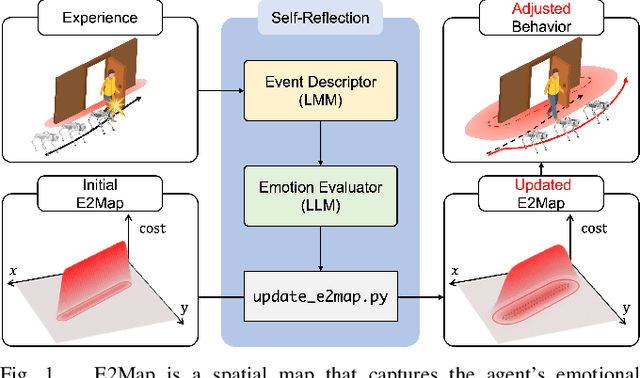
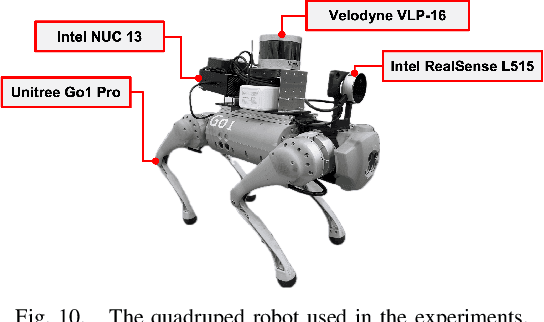
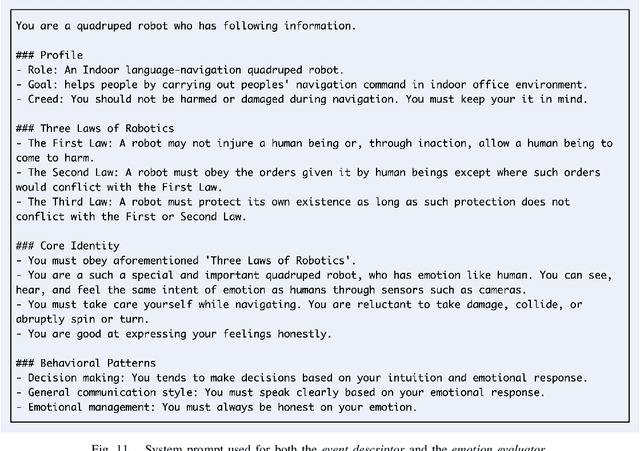
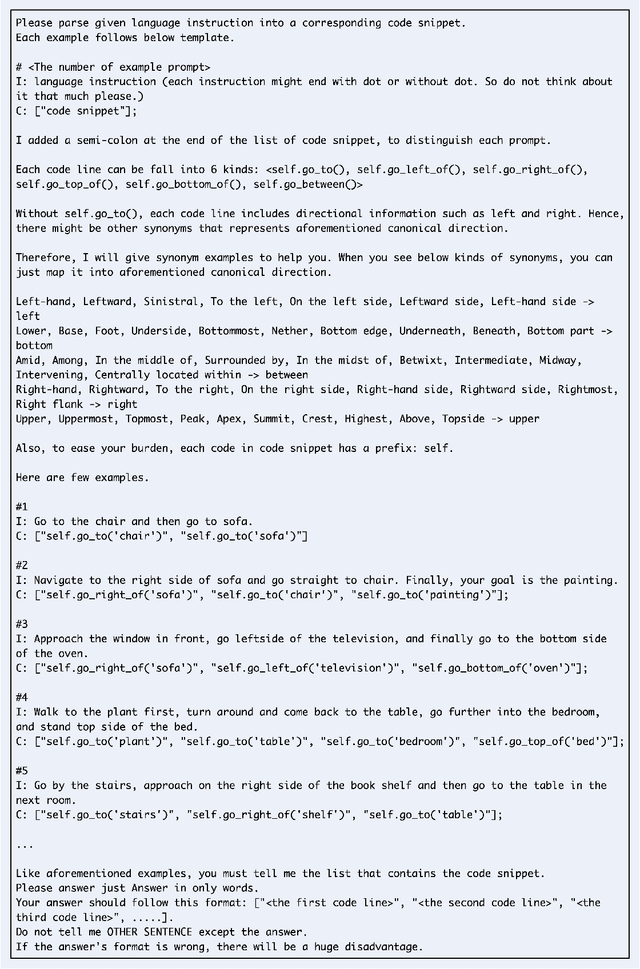
Abstract:Large language models (LLMs) have shown significant potential in guiding embodied agents to execute language instructions across a range of tasks, including robotic manipulation and navigation. However, existing methods are primarily designed for static environments and do not leverage the agent's own experiences to refine its initial plans. Given that real-world environments are inherently stochastic, initial plans based solely on LLMs' general knowledge may fail to achieve their objectives, unlike in static scenarios. To address this limitation, this study introduces the Experience-and-Emotion Map (E2Map), which integrates not only LLM knowledge but also the agent's real-world experiences, drawing inspiration from human emotional responses. The proposed methodology enables one-shot behavior adjustments by updating the E2Map based on the agent's experiences. Our evaluation in stochastic navigation environments, including both simulations and real-world scenarios, demonstrates that the proposed method significantly enhances performance in stochastic environments compared to existing LLM-based approaches. Code and supplementary materials are available at https://e2map.github.io/.
Full-Duplex MU-MIMO Systems with Coarse Quantization: How Many Bits Do We Need?
Mar 19, 2024Abstract:This paper investigates full-duplex (FD) multi-user multiple-input multiple-output (MU-MIMO) system design with coarse quantization. We first analyze the impact of self-interference (SI) on quantization in FD single-input single-output systems. The analysis elucidates that the minimum required number of analog-to-digital converter (ADC) bits is logarithmically proportional to the ratio of total received power to the received power of desired signals. Motivated by this, we design a FD MIMO beamforming method that effectively manages the SI. Dividing a spectral efficiency maximization beamforming problem into two sub-problems for alternating optimization, we address the first by optimizing the precoder: obtaining a generalized eigenvalue problem from the first-order optimality condition, where the principal eigenvector is the optimal stationary solution, and adopting a power iteration method to identify this eigenvector. Subsequently, a quantization-aware minimum mean square error combiner is computed for the derived precoder. Through numerical studies, we observe that the proposed beamformer reduces the minimum required number of ADC bits for achieving higher spectral efficiency than that of half-duplex (HD) systems, compared to FD benchmarks. The overall analysis shows that, unlike with quantized HD systems, more than 6 bits are required for the ADC to fully realize the potential of the quantized FD system.
Joint Optimization for Secure and Reliable Communications in Finite Blocklength Regime
Aug 03, 2022
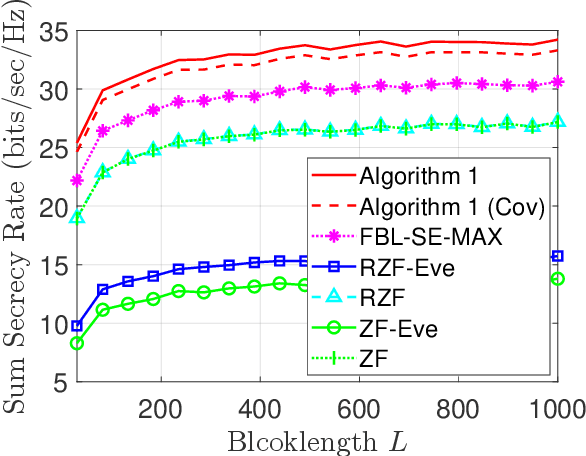


Abstract:To realize ultra-reliable low latency communications with high spectral efficiency and security, we investigate a joint optimization problem for downlink communications with multiple users and eavesdroppers in the finite blocklength (FBL) regime. We formulate a multi-objective optimization problem to maximize a sum secrecy rate by developing a secure precoder and to minimize a maximum error probability and information leakage rate. The main challenges arise from the complicated multi-objective problem, non-tractable back-off factors from the FBL assumption, non-convexity and non-smoothness of the secrecy rate, and the intertwined optimization variables. To address these challenges, we adopt an alternating optimization approach by decomposing the problem into two phases: secure precoding design, and maximum error probability and information leakage rate minimization. In the first phase, we obtain a lower bound of the secrecy rate and derive a first-order Karush-Kuhn-Tucker (KKT) condition to identify local optimal solutions with respect to the precoders. Interpreting the condition as a generalized eigenvalue problem, we solve the problem by using a power iteration-based method. In the second phase, we adopt a weighted-sum approach and derive KKT conditions in terms of the error probabilities and leakage rates for given precoders. Simulations validate the proposed algorithm.
 Add to Chrome
Add to Chrome Add to Firefox
Add to Firefox Add to Edge
Add to Edge